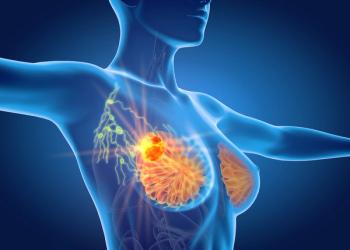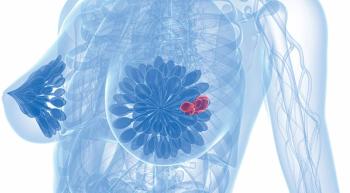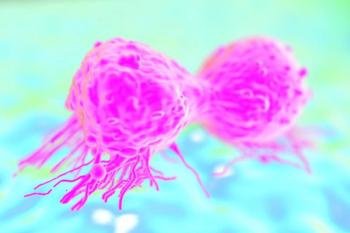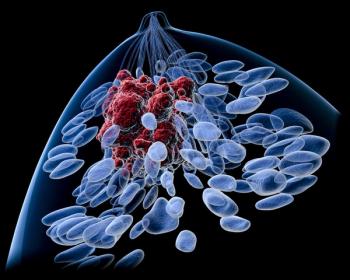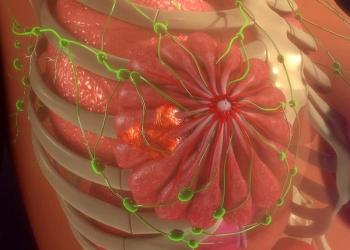
Oncology NEWS International
- Oncology NEWS International Vol 11 No 10
- Volume 11
- Issue 10
New MRI Technique Diagnoses Breast Lesions via Perfusion Patterns
WASHINGTON-A new technique employing high-resolution contrast-enhanced magnetic resonance imaging (MRI) can distinguish between benign and malignant breast lesions by showing lesion perfusion patterns (images and Figure 1). Hadassa Degani, PhD, head of the Department of Biological Regulation, the Weizmann Institute of Science, Rehovot, Israel, discussed the method, developed in her lab, at the Susan G. Komen Breast Cancer Foundation 5th Annual Conference on Innovations in Quality Care.
WASHINGTONA new technique employing high-resolution contrast-enhanced magnetic resonance imaging (MRI) can distinguish between benign and malignant breast lesions by showing lesion perfusion patterns (images and Figure 1). Hadassa Degani, PhD, head of the Department of Biological Regulation, the Weizmann Institute of Science, Rehovot, Israel, discussed the method, developed in her lab, at the Susan G. Komen Breast Cancer Foundation 5th Annual Conference on Innovations in Quality Care.
The new technique appears promising not only as a diagnostic tool but also as a means of monitoring the effects of antiangiogenic agents and chemotherapy regimens in breast cancer patients, Dr. Degani commented (see Figure 2 ).
Earlier work by Dr. Degani and her colleagues in which they monitored perfusion of tumors in animal models of breast cancer provided valuable information about the physiology of the microvasculature of benign and malignant lesions, she said. Two parametersmicrovascular permeability and extracellular volume fractionproved to be most useful in making the distinction between normal and cancerous tissue.
Unlike normal tissues, perfusion in tumors is "irregular and heterogeneous," Dr. Degani said. The immature blood vessels of malignant tumors differ from normal vessels by being "much leakier" (ie, having higher permeability). Differences in cell density are also important. Cancer cells are "more crowded" than normal ones, she said. Contrast agents, therefore, will slowly fill up the larger empty spaces in normal tissues relative to the fast fill up of the lower extracellular volume fraction for cancerous tissue.
The new method uses gadolinium-DPTA as a contrast material. Images are obtained via the three-time-point (3TP) method developed in Dr. Degani’s lab.
Using 3TP, contrast-enhanced im-ages are recorded at three time pointsone before the contrast agent is administered into the bloodstream (t0) and two afterwards (t1 and t2). The wash-out pattern between t1 and t2 is displayed as a color hue (with red typical of cancerous tissue, green indeterminant for cancer, and blue typical of benign tissue). The wash-in rate between t0 and t1 is displayed as color intensity.
Special 3TP software, using mathematical algorithms, relates the color hue/intensity pattern to the two perfusion parameters, with red (typical of cancer) indicating high microvascular permeability and low-to-medium extracellular volume fraction. The software program then provides a combination image that overlays the color-coded dynamic parameters onto the conventional MR images showing morphology.
The mathematical algorithms "can be tailored to almost any" MRI scanner equipped with a special breast coil, but high-resolution is necessary for accurate diagnosis, Dr. Degani explained. "The higher the resolution, the more information you get."
Clinical Testing
In conjunction with hospitals in Wisconsin, Illinois, and Florida, human studies of the technique are ongoing. MRI data produced in the United States according to standardized 3TP protocols are sent overnight via the Internet to Dr. Degani’s lab, where mathematical analysis produces the color-coded images on which cancers appear as red "hot spots."
The technique has shown high sensitivity and specificity in more than 120 patients to date, she said. A report of the Wisconsin trial (headed by Dr. Frederick Kelcz, University of Wisconsin, Madison) is currently in press in the American Journal of Roentgenology.
The technique has proven especially useful in identifying tumors in dense breast tissue that produces ambiguous mammographic images, Dr. Degani said. It also may give information about the tumor’s invasiveness, because invasive cancers show much more angiogenesis. Degrees of invasiveness have been apparent even in ductal carcinoma in situ, she said.
Dr. Degani cautioned that the technique is still undergoing testing. "I’m speaking about small numbers," she said. "We need many more cases, but the promise is high."
Articles in this issue
about 23 years ago
FDG-PET Predicts Prognosis in Primary Osteosarcomaabout 23 years ago
Vaccine Turns Immune System Against Cancer Cellsabout 23 years ago
Three Themes to Guide von Eschenbach at NCIabout 23 years ago
Arimidex Approved for Early-Stage Breast Cancer in Postmenopausal Ptsabout 23 years ago
Long-Term Exposure to Diesel Exhaust Poses Lung Cancer Riskabout 23 years ago
Most Americans Unaware of Excessive Weight as a Risk for Some Cancersabout 23 years ago
Three Themes to Guide von Eschenbach as NCI Directorabout 23 years ago
Gleevec Gets FDA Priority Review for First-Line Use in Early CMLabout 23 years ago
New Anti-HIV Agent Prevents Virus From Entering Cellabout 23 years ago
Docetaxel/Gemcitabine Effective in Advanced NSCLCNewsletter
Stay up to date on recent advances in the multidisciplinary approach to cancer.


